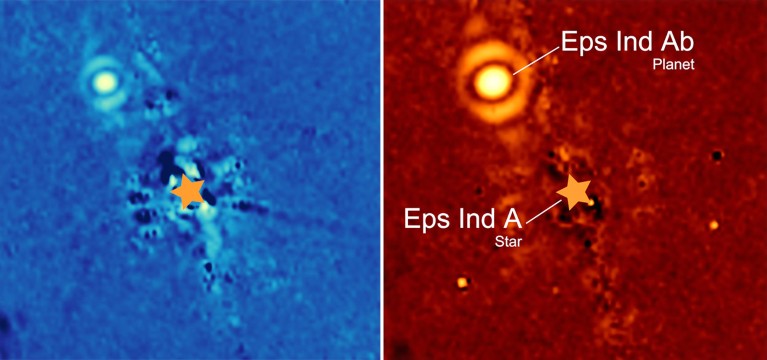This glowing speck is a freezing exoplanet six times the size of Jupiter [View all]
24 July 2024
One of the closest extrasolar planets to our Solar System is the most frigid ever to be directly imaged.
By Davide Castelvecchi

MIRI images obtained at mid-infrared wavelengths 10.65 (left) and 15.55 micrometres (right), which depict the area around the star Eps Ind A, whose position is indicated by star symbols.
JWST images of the exoplanet obtained in the infrared spectrum. The position of the star is indicated by symbols.Credit: T. Müller (MPIA/HdA), E. Matthews (MPIA)
Astronomers have photographed a planet six times as massive as Jupiter orbiting one of the closest stars to the Sun. It is the first extrasolar planet to be discovered through direct imaging using the James Webb Space Telescope.
“This is a cold planet,” says astronomer Elisabeth Matthews at the Max Planck Institute for Astronomy in Heidelberg, Germany. The results were published in Nature1 on 24 July.
“If real, the planet is by far the oldest and coldest that has ever been imaged,” says Markus Janson, an astronomer at Stockholm University.
Researchers usually detect exoplanets by tracking how they periodically cross the line of sight to Earth, temporarily dimming the light of their host stars, or because their gravitational pull causes a measurable wobble in the star itself. Only a few dozen exoplanets so far have been imaged directly, typically because they are hot and bright enough to be detectable despite their stars’ glare.
More:
https://www.nature.com/articles/d41586-024-02440-3

